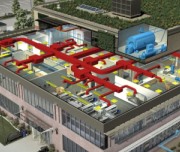System Impacts
Financial Impact
Submetering can be a financially viable component of energy management by informing improved energy consumption management. It is important to remember first that submetering systems by themselves do not reduce energy use, greenhouse gases, or costs. In fact, installing, monitoring, and analyzing data will require resources such as installation, integration, calibration, and training costs. Instead, submetering should be viewed as a system that enables optimized performance and energy efficiency. Purposeful and carefully planned submetering programs generate data that can guide management strategies, investments, and operational decisions that ultimately bring about resource reduction benefits and financial savings.
Findings and Case Studies
EPA Sub-Metering Energy Use in Colleges and Universities: Incentives and Challenges![]()
- Due to the energy conscious behavioral incentives made possible by the granular level of data provided by submetering, the school reduced energy consumption after 18 months, saving $300,000 per year
- Submeters aided in identifying operational procedures that resulted in wasteful practices in energy intensive departments at the school
- Aids in the prioritization of energy retrofit projects
- Estimates savings of about $1 million per year for 10 years
Department of Energy EERE Nissan North America![]()
- Granular submeter data helped staff identify opportunities to adjust production schedules for optimal energy use
- Identification of inefficient equipment use or sequencing that provide little output value or have inefficient on/off cycling
- Optimized equipment usage
- Improved plant staff knowledge about equipment responsiveness to weather conditions, enabling predictive production plant adjustments
Vornado - New York City Office![]()
- Data from 3,000 submeters was transmitted to the remote terminal units, yielding over 105,000,000 records of energy usage across Vornado’s portfolio within 5 years
- One tenant realized a 15% reduction (i.e. reduced over 2,000 kWh per day during the weekdays and slightly more during the weekends) in overall electricity consumption from resulting adjustments requiring no capital investment within a short amount of time
Wayne Aspinall Federal Building![]()
- Explores the energy-efficiency design features of the Wayne Aspinall Federal Building and U.S. Courthouse in Grand Junction, Colorado.
- Learned to monitor resource use through the use of circuit level submetering integrated with the BAS system.

